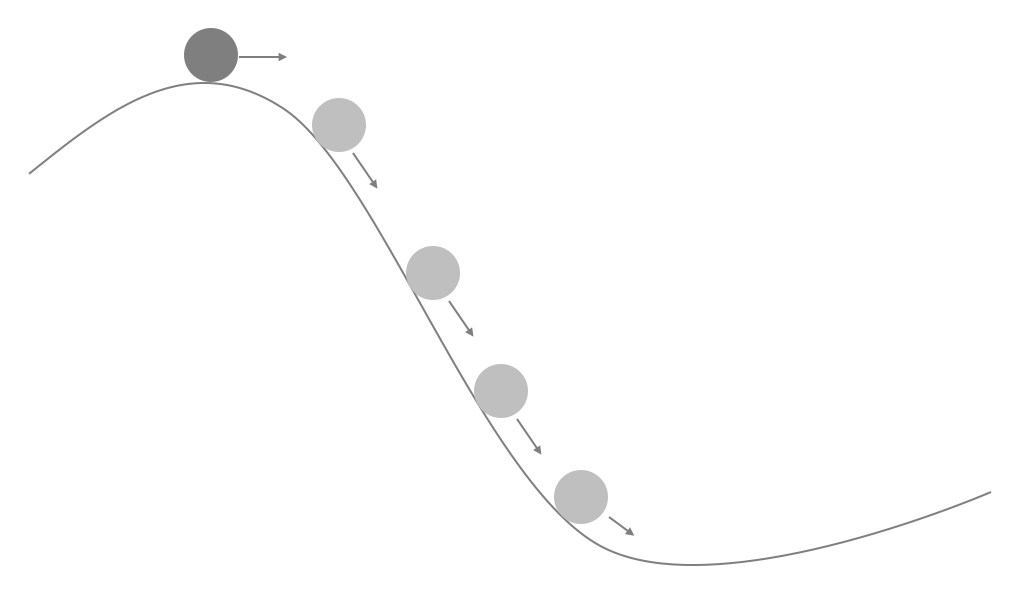A rolling-ball view of learning
To learn the parameters of the model, we create a cost function or objective function and minimize its value. The minimum value of objective will give the best parameters for the model. For example, let model

predicts a value

and also let we are given with the dataset of both the model input and the output. Then, learning a model requires updating the parameters

such that we get the best performance.
To make the model learn, we use parameter update rule. It works by estimating how far the model-estimated values are away from the target values and then updates the parameter such that this difference reduces. After several iterations, the difference gets smaller, and once it is small enough, we say our model has learnt the parameters. A figurative explanation is given here:

The learning of the model is similar to a rolling ball. It is an iterative process, and after each process, the parameters are updated. The update pushes the parameters to minimize an objective...







































































